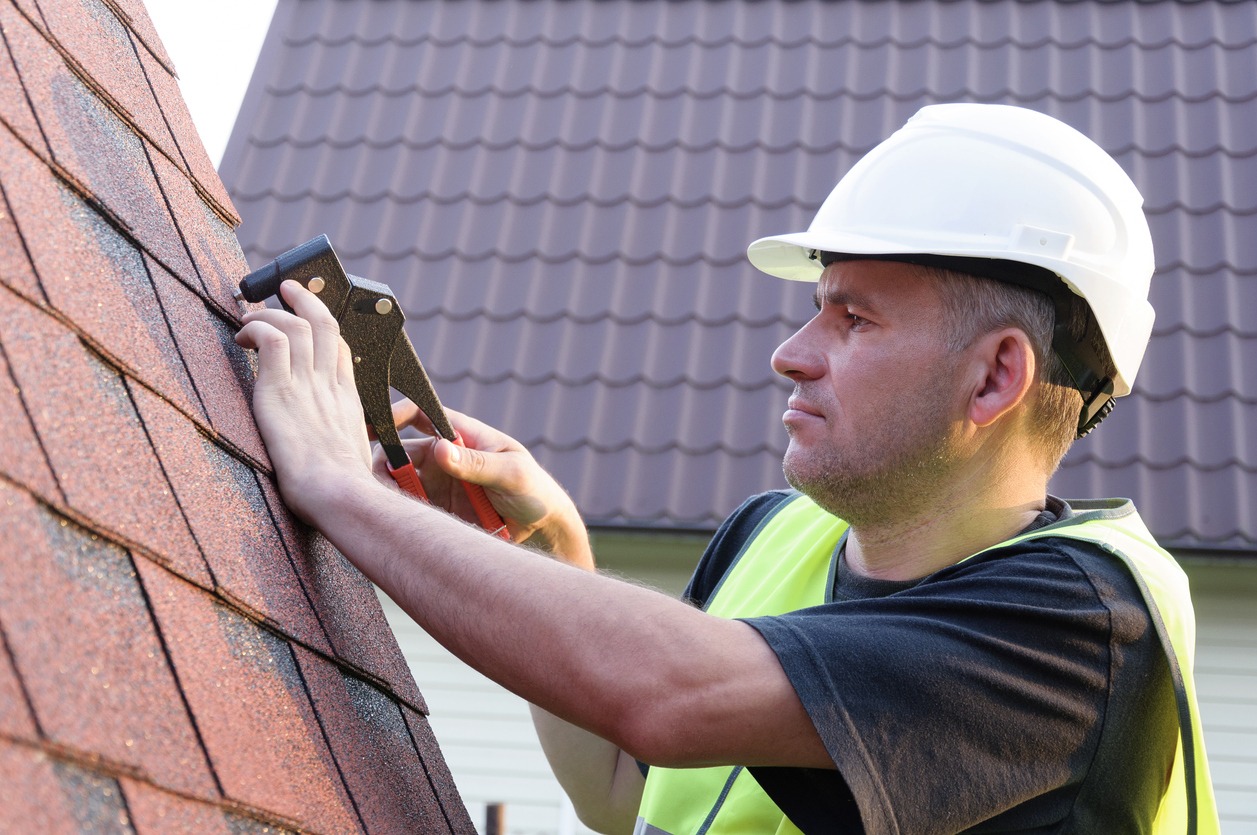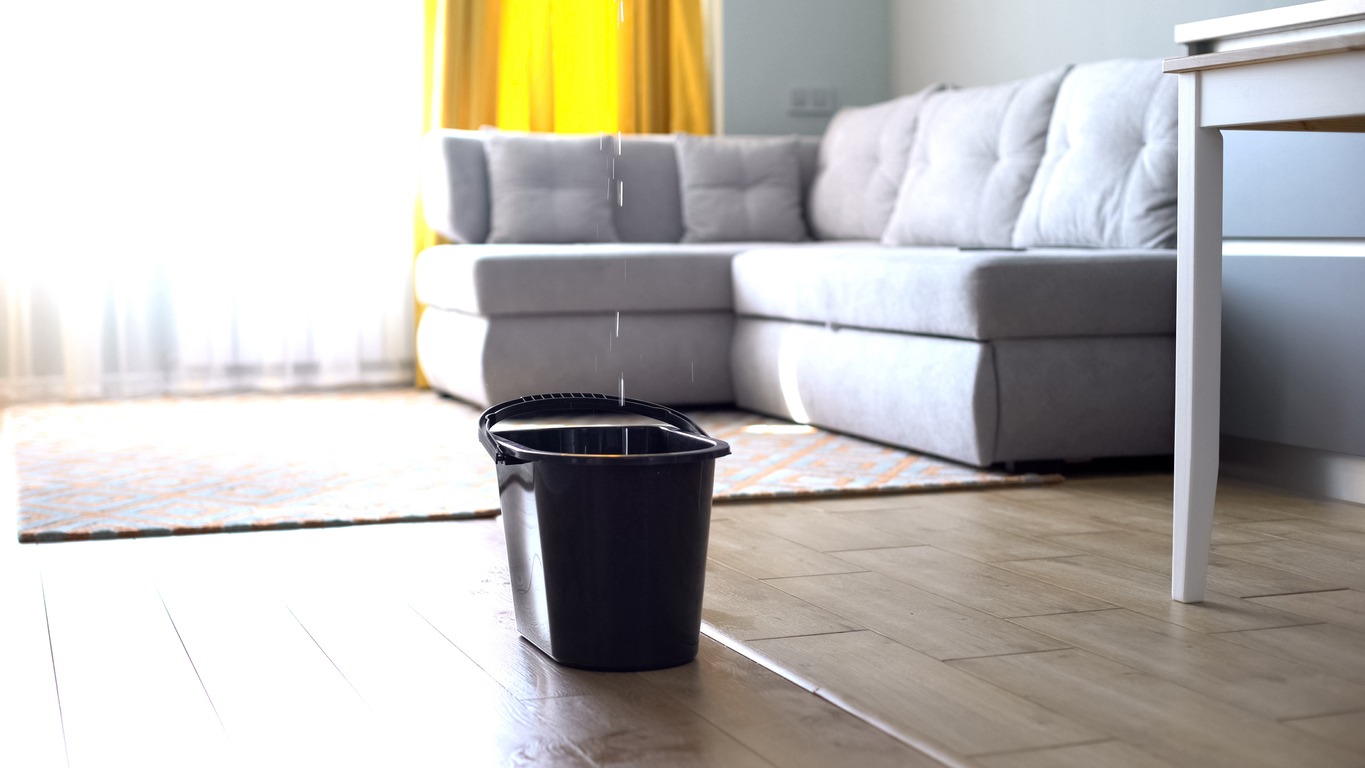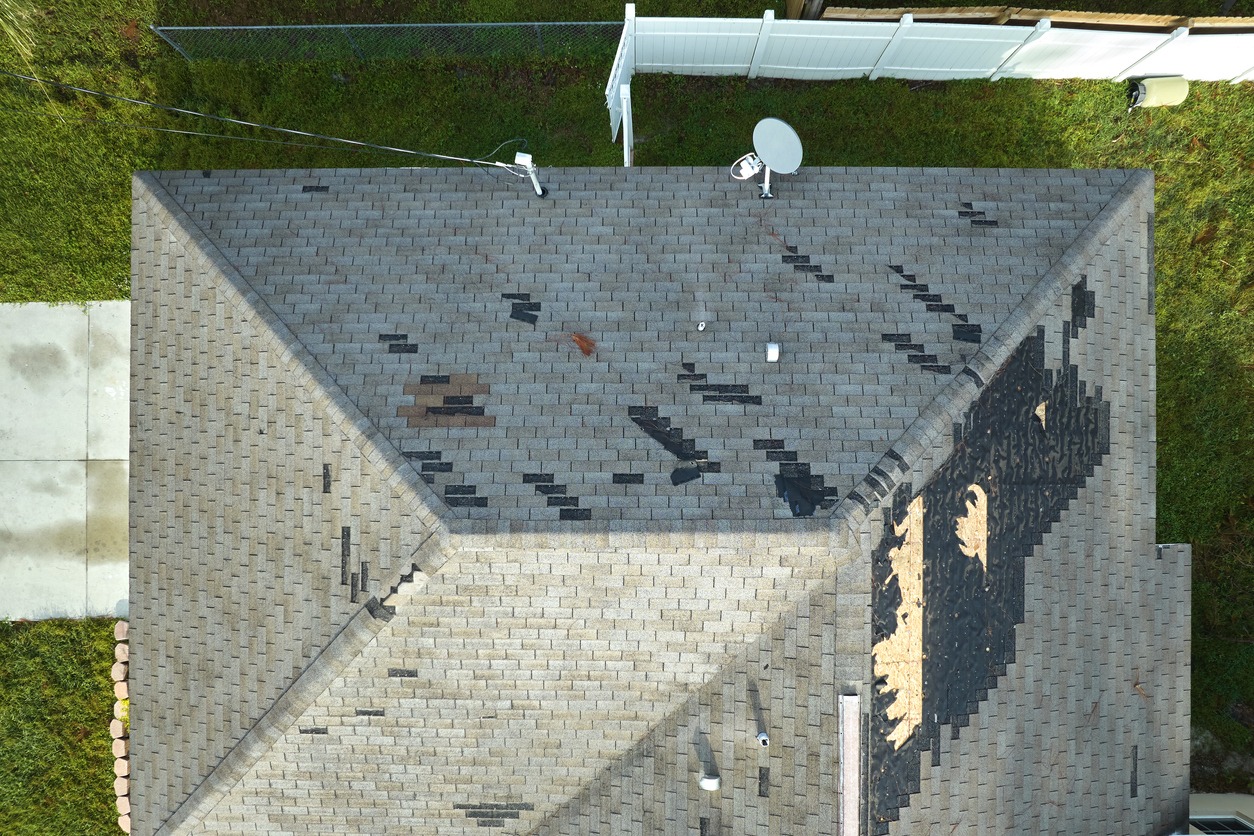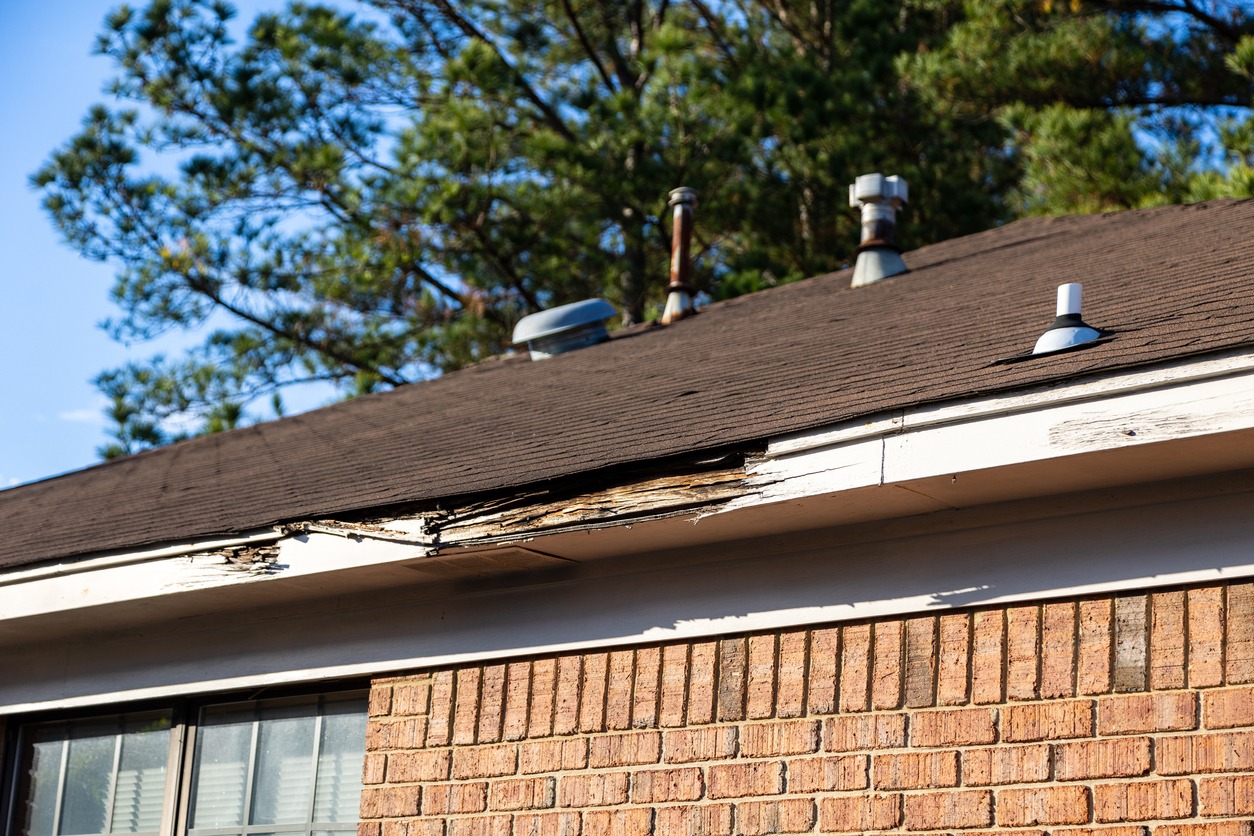Being a homeowner comes with its share of concerns, especially when it comes to maintaining your roof. Roofs don’t last forever, so you may be facing issues for at least one point in your home ownership. As time passes, your roof can experience wear and tear due to various factors like weather and age. Even small problems, if ignored, can lead to bigger issues like leaks, water damage, and structural problems that need fixing.
While tasks like painting interiors or landscaping can be done yourself, roof repairs or replacements might seem unfamiliar. If there are potential issues and damages on your roof, it’s best to call a reliable roofing contractor for repairs to save you from needing a new roof prematurely.
Explore this helpful list of common roof issues and learn how to address them easily!
Leaks
Roof leaks are a common headache that can lead to serious damage if ignored. Even the tiniest openings in your roof, like cracked flashing or damaged shingles, can let water sneak in. Once inside, water can cause mold, wood decay, and harm to your walls and ceilings.
When it’s pouring outside, look for watermarks on your walls or ceilings, strange damp odors, or any visible signs of water sneaking in. If water is dripping inside and making a puddle in your home, the leak has been there for a while.
The leak’s actual hiding spot could be a few feet away from where water enters. To catch this, go to the attic with a flashlight. Watch out for water stains, mold, or suspicious dark marks. If your ceiling is vaulted and you can’t reach the attic, you can only check the issue on the roof. Finding the exact source is a bit like detective work, and you will need the help of a professional.
Leaks can happen from different locations on or connected to your roof, including:
- Underneath damaged shingles
- Gutter seams
- Around the chimney
- Edges of skylights
- Around flashing points
- Around vents and pipes
- In the valley between roof lines
Repair options often involve replacing damaged shingles, fixing flashing, or sealing the roof surface. Immediate action is vital to stop more harm to your home and dodge pricey fixes down the line.
Damaged shingles
Cracked, broken, or curling shingles are a leading cause of pesky leaks. These issues can stem from different causes, such as harsh weather conditions, wind damage, overexposure to the sun, poor upkeep, and aging. Signs of damage include cracks, missing parts, curling edges, or granule loss on your shingles.
Also, when the adhesive on your shingles starts to wear off, it tends to loosen and break. The sealant could deteriorate due to nature’s forces, critters, or wear and tear. Shingles might tear away depending on your roof’s age, which is common.
To address the problem, assess the extent of the damage. If only a few shingles are affected, you can replace them individually. Gently lift the neighboring shingles, then remove the damaged ones. Slip a new shingle into place and secure it using nails or roofing adhesive. If the problem is widespread, it might be time to think about a complete roof replacement.
For effective and safe repair, seek assistance from a professional roofer. Regular checkups and maintenance can help stave off shingle issues and prolong your roof’s life.
Granule runoff
If your roof has seen some years and granules are finding their way into your downspout, it’s a signal that your shingles are losing their strength and might be due for a replacement.
Granules play a vital role as your roof’s sunscreen against UV rays. As they fall off, shingles get exposed and can start showing cracks. The loss of granules can also create “bald patches” on your roof, which can be tough to spot from the ground or without an expert’s eye.
One of the first signs of granules falling off is clogging in the gutters. Unless you have a lot of debris like leaves and twigs blocking your gutters, chances are they are granules and need to be replaced.
Water puddles on flat roofs
Water can pool on the surface of flat roofs. Ignoring these water puddles can wreak havoc on your roof’s membrane, resulting in leaks and water damage. While flat roofs are designed not to absorb and gather water, it can happen as the roof ages or if improperly maintained. Pooling water can also be caused by sun damage, weathering, poorly installed drains, or underlying structural issues.
To fix this, one approach is to set up a tapered insulation system – a gentle slope will be added to the roof’s surface. This lets water flow towards the gutters or drains. Don’t forget to sweep away any debris, like leaves or twigs that might block the water’s way. Another solution involves installing drainage systems, like scuppers or downspouts, to steer water clear of the roof. Have a seasoned pro inspect your roof occasionally to prevent bigger issues in the future.
Damaged flashings
Flashings are thin metal strips installed around chimneys, vents, and skylights to prevent water from seeping in. Yet, with time, they can suffer from wear and tear, which makes them deteriorate and invite water in. Also, when installed improperly, it won’t do its job well.
Problems caused by damaged flashings can be prevented with routine maintenance. When inspecting the roof, always keep an eye out for rust, cracks, or gaps in flashings.
When the flashings are damaged, start by identifying the extent of it. Sometimes, a simple patch-up—like swapping or sealing a worn piece—does the trick. But if things are bad, you might need to overhaul the entire flashing system. Hiring a roofing professional is the way to go to get it right and safe. Take special attention to your:
- Chimney Flashing – Caulking is often used with flashing around chimneys, but it has a relatively short lifespan, so it needs frequent inspection.
- Pipe Flashing – Pipe flashing or roof boots last about 15 years when installed correctly. Check all flashing spots and scout for any misplaced materials to prevent leaks and other roof issues. To repair pipe flashing, your roofer will need to reinstall a new flashing.
Decaying fascia boards and soffits
Fascia boards and soffits are essential components of a roof, keeping it safe from the elements and adding a touch of aesthetics to homes. But being made of wood or composites, they can wear down due to moisture, insects, and other sources of wear and tear over time.
To identify rotten fascia and soffits, keep an eye out for watermarks, paint that’s peeling off, or any obvious damage. To fix it, swap it with fresh fascia and soffits. Choose materials that shrug off moisture and insects to dodge future damage. Plus, make it a habit to inspect and care for these roof parts regularly. Catching issues in their early stages can save you from costly repairs later on.
Clogged and damaged gutters
Blocked gutters can cause significant damage to your roofing system. Gutters are designed to direct rainwater away from the roof and the foundation of the house. But when they get choked with leaves, debris, and other stuff, things go haywire. Those clogged gutters will make it rain, but not in a good way. Water might overflow, damaging your roof, fascia, and soffit.
Signs of clogged gutters are water water spilling over the edges or debris piling up visibly. Unclog it by using a handy gutter cleaning tool or your hands. Mark your calendar for this task at least twice a year, usually when spring and fall roll around. This simple maintenance can prevent clogs from forming. If it’s not possible for you to tackle this job yourself, seek the help of pros for a professional gutter cleaning service.
Poor ventilation
Poor roof ventilation causes the entire roofing system to suffer severe damage. If a roof is not ventilated properly, hot air becomes trapped in the attic, leading to higher temperatures throughout the house. This will cause your energy bills to spike up and reduce the comfort in your home.
And there’s more. Moisture can build up in the attic, causing mold to grow. When molds are present, your roof structure can rot.
How can you beat this issue? One option is to add more roof vents to let more air circulate in and out of the attic. Another option is to introduce mechanical ventilation systems, like exhaust fans or whole-house ventilation systems, to remove extra heat and moisture.
Sometimes, you may need to replace or remove insulation that blocks the airflow. And don’t forget to seal any holes that let moisture enter the attic.
Skilled roofing contractors will ensure that your roof isn’t just water-tight but also allows for correct movement of airflow. If your roof’s ventilation is poor, the number of roof vents you need to be installed or repaired will influence how much your roof repair will cost.
Damage caused by tree debris
One of the most common roof problems after a severe storm is damage from falling branches. It’s not only big branches that can cause significant damage – even smaller branches can rub against the roof, weakening shingles and eroding its top layer.
The fix for this problem is to trim the tree branches when they reach the roof. If the tree poses a serious threat, not just to your roof but also to your home’s foundation, then it’s best to cut it down and replant a tree somewhere else, farther from your house.
Damaged roofing materials
Nature is the most common contributing factor to roof deterioration, and the best solution is regular maintenance. If you catch issues quickly, they can save you from handling severe, expensive problems. Schedule a regular maintenance check with your roofing contractor so they can detect these issues before they get worse.



